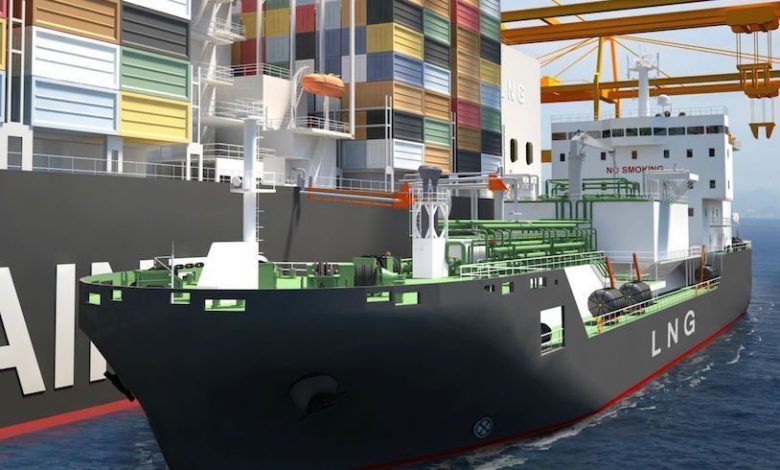Heated LNG red herring debate

Part of my job as an editor of a daily shipping news title is to generate debate. So when an article popped into my inbox the other day entitled ‘Why LNG as the ship fuel of the future is a massive red herring’ I knew our site was in for a busy day.
Written by Dr Tristan Smith from the Energy Institute at University College London (UCL), the article posited that while LNG helps reduce air pollution, it’s potentially worse than heavy fuel oil (HFO) in the context of greenhouse gas (GHG) emissions. This is because methane is a potent greenhouse gas, and only a very small amount needs to escape to cancel out the combustion CO2 benefits.
“LNG is a fossil fuel that just like oil produces about three tonnes of CO2 for every tonne of fuel consumed. This makes it an ‘impasse’ in a world committed to decarbonise,” Smith wrote in his widely read contribution to Splash.
Focusing on LNG as shipping’s fuel of the future starves attention and investment from what Smith argued are genuine sustainable solutions that the sector desperately needs such as hydrogen, ammonia, bioenergy and electrification.
As expected Smith’s article detonated on social media.
Dr Roar Adland, shipping chair professor at the Norwegian School of Economics, concurred with his UCL counterpart claiming LNG as a ship fuel was a “waste of money”. Solar, hydrogen or batteries were better options, Adland suggested.
Andre Marcano, chartering manager at Hamburg Bulk Carriers, chipped in, saying that hydrogen fuel cells will power ships far sooner than many believe.
Much of the debate on LinkedIn then centred on potential limited access to rare earth commodities needed to harness battery technology.
Over at Splash the comments were also coming in thick and fast – one reader comparing much of the green tech debate to the Emperor’s New Clothes, while there was strong backing for greater investment in and adoption of wind technology.
Tobias Koenig, an occasional columnist for this publication, joined the debate on LinkedIn, describing LNG as an “interim fuel” for shipping.
If it is an interim, there are some companies out there – the likes of CMA CGM and Total spring readily to mind – who are investing huge, huge sums on something that is unlikely to meet climate demands set down in the UN’s Paris Agreement.
It’s interesting to note that of the nearly 5,000 people who have viewed the article I posted on LinkedIn just three days ago, it has been read most by employees of a bunkering company, a certain French liner and two rather large engine manufacturers who happen to be touting LNG propulsion a lot these days.
What the debate has shown me this week is that shipping has yet to find its silver bullet when it comes to the environment.

Hi Sam – thanks for facilitating this important debate. Here in the Pacific we are preparing member country delegates for the next round of the IMO Roadmap and the critical debate on level of ambition. While all states have agreed the Paris Agreement temperature goals, many of the same states seem to believe they can attempt a lower goal and ambition for shipping within the IMO. It is quite clear that the survival of our low lying island nations is entirely dependent on all sectors driving for no more than 1.5 degrees. While the current LNG debate is largely targeted at larger shipping, we are first hand witness to how this topic is sucking the oxygen and skewing our search for real decarbonsition pathways for our small island states. 3 years ago consultants were hired and a year long expensive WB funded process of assessing the role of LNG in the region’s maritime fuels future. Regional workshops were held involving flying large numbers of country delegates to Fiji and then Hawaii. Whether such a study was ever seriously expected to find a place for LNG to power local shipping is highly arguable. By the time the final report came out, all reference to LNG/LPG as a future marine fuel has disappeared. Meantime, a whole host of other potential solutions remain unevaluated or trialled. Is this just more fiddling while Rome burns?
The key point that shouldn’t be missed in the debate is that irrespective of the ‘fuel’ issue there is a need to continue to increase the efficiency of existing and future ships; i.e. design for operation and not for capex, coupled with a need for differing business models that do not as a matter of course reward the system going faster when fuel costs dip and/or freight rates rise. In a number of instances the alternative/transformational fuels that arise in discussion require significant improvements in efficiency and/or reduction in operational speeds to be realistic in terms of their integration at ship.
Solutions are likely to take multiple forms. The key is to embrace divergence in solution thinking and not look for silver bullets, be open to innovation and new ways of working.
All said whilst LNG falls within the solutions space for the present it is likely only a stepping stone to another. The question then is its longevity and how much investment is prudent.